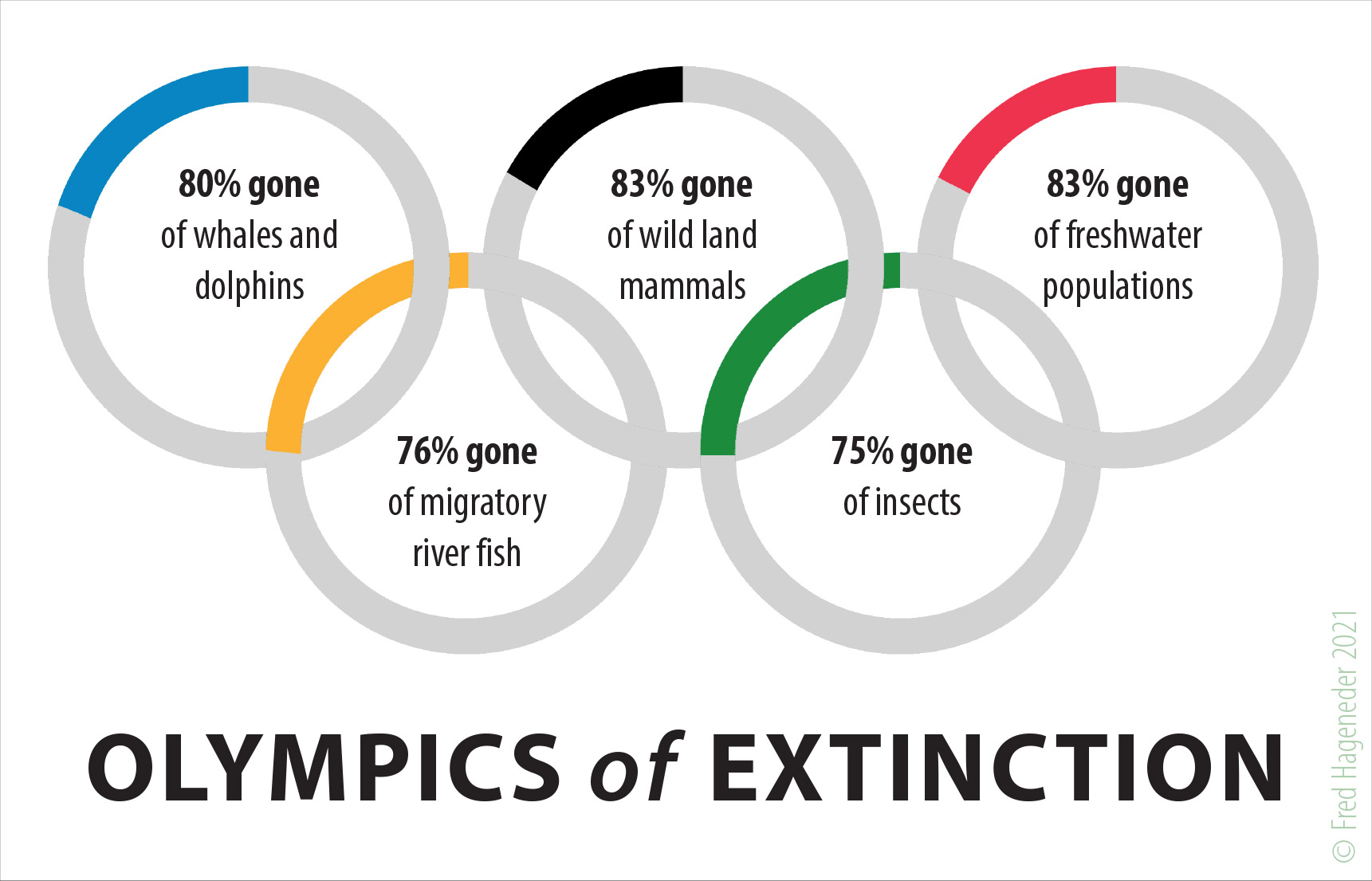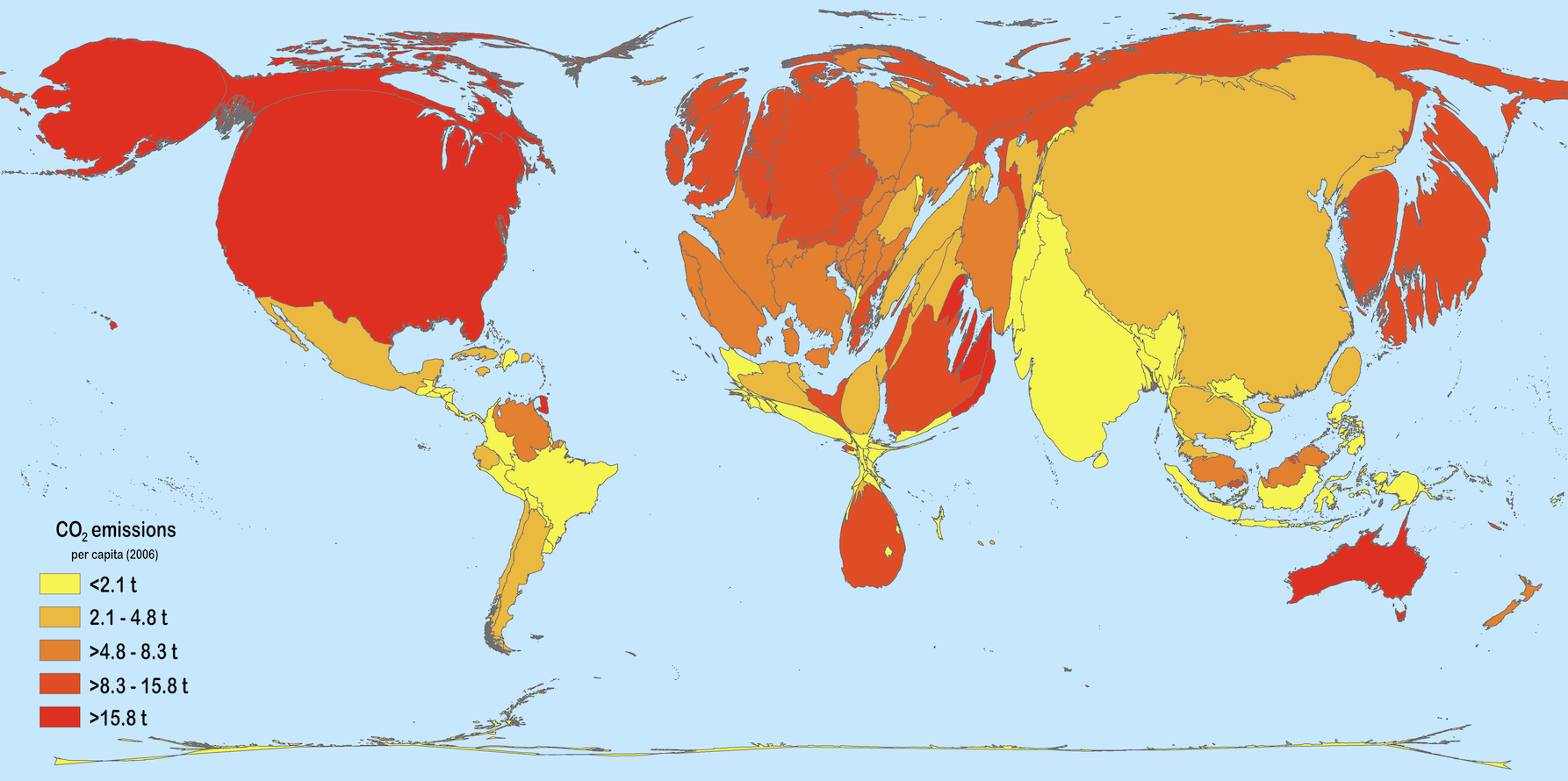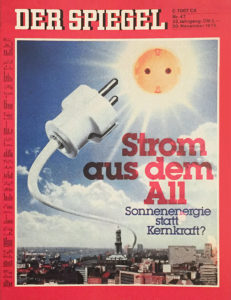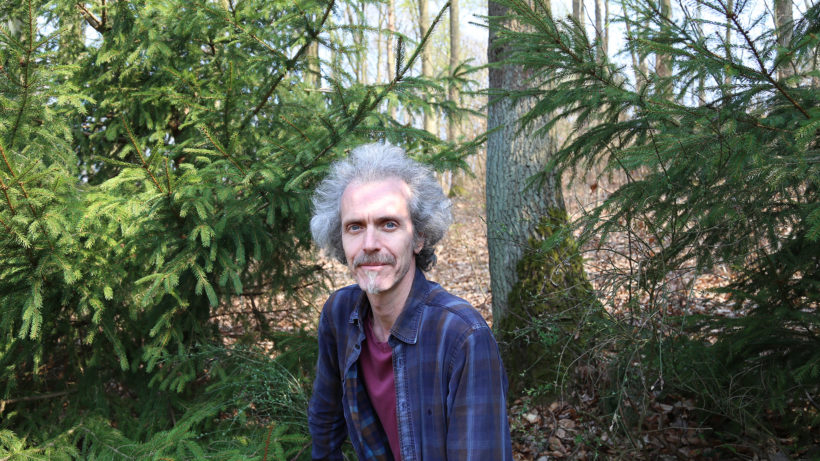Heat waves, droughts, floods and wildfires are on the rise, the IPCC and the UN are sounding the alarm bells. Recently, even a report by the National Oceanic and Atmospheric Administration NOAA (United States Weather and Oceanographic Administration) attested the worrying world records in wide areas: never before has the concentration of greenhouse gases been so high and the rise in sea levels and temperatures so enormous as in recent years.
But how is it all really connected? Is it only our car journeys and air travel that are to blame for everything, or are there other factors that are perhaps still not talked about enough? For example, what about industrial agricultural and its increasing use of pesticides, or the globalised trade flows? To what extent does our own consumption actually contribute to all this? And above all: is this our fate as humanity, is it already too late or can we still avert the catastrophic future that science predicts for us, and if so, how?
We ask these and other questions to Fred Hageneder, ethnobotanist, naturalist, activist and author of the new book “Healthy Planet – Global Meltdown or Global Healing”.
Fred, you have spent the last three years painstakingly researching all the latest developments, scientific reports and articles on the state of our home planet, and putting them into your new book. What is your prognosis for the future?
The situation is very, very serious, full stop. But it is still possible to achieve a future worth living for all Earth’s inhabitants – and by “all inhabitants” I don’t just mean the human species, but all species that contribute to the biodiversity of this unique planet. I think – like many others in the field of ecology – that the 2020s will be the all-important decade for the future of humanity and the planet.
And for that we are all called upon now! There is no more hiding behind the sofa. We all have to find our backbone now, decide whether we stand up for a healthy, living planet – that is, life itself – and then speak out and defend this truth of ours. Charles Eisenstein recently published a wonderful plea on this subject: The rehearsal is over.
In the book, you name three major problems facing humanity: besides climate disruption, these are the mass extinction of species, and the global contamination by micro- and nanoplastics. First of all, the mass extinction of species: Do individual species really have such great significance for the whole, the ecosystem, or even the ecosphere? There is little about this in mainstream media…
Indeed, mainstream media carelessly spread the impression that the climate crisis is the biggest or even the only ecological problem. Yet biodiversity loss, plastic contamination, but also the waste and contamination of drinking water, and the degradation of the world’s soils through industrial agriculture all have the potential to wipe out humanity before the end of this century. Long before the often-invoked rising sea levels would become a core problem for all nations.
First of all, species diversity and biodiversity are not the same. The latter term is the more comprehensive one. Biodiversity means diversity on three levels: that of species, but also of genetic diversity within a species, and the ecological diversity of habitats, or ecosystem diversity. In addition, even a single “species” is richer in itself than most people realise, because a species is composed of subspecies, varieties and unique local populations. Think of apples, for example: the cultivated apple (Malus domestica) as a species is anything but extinct, but gone are the days when there were literally hundreds of apple varieties, with a wide spectrum between sweet, sour and astringent, and with myriads of flavours! Today, the consumer gets to choose between Golden Delicious, Granny Smith, Cox and Gala, and that’s it. Only a few varieties meet the commercial requirements of the globalised food industry; and humans and biodiversity lose out.
Every single animal, bird, insect or fish species counts, because diversity is an indispensable component of life on Earth. Planet (and climate) need a diversity of landscape types, ecosystems need biodiversity, and species need genetic diversity that gives them resilience to environmental challenges.
On the significance of individual species, I would like to cite one of my favourite examples, the sea otter. Seagrass beds and kelp forests are among the most important ecosystems in the sea, but they too are in decline. But along those coasts where sea otters are spreading again, kelp and seagrass habitats are recovering. Why? The sea otters eat crabs, which otherwise decimate sea snails too much, which in turn live on certain types of algae that proliferate on the sea grass and suffocate it. In this way, the sea otters keep the seagrass stocks healthy. And a similar food chain helps the kelp. And elsewhere, other hunters and predators at the top end of the food chain do their jobs, for example, sharks. And on land, wolves, foxes, big cats ensure healthy forest landscapes by keeping plant-damaging ungulates and rodents at bay.
But the current mass extinction of species has two other terrible aspects. Firstly, the ecosphere is not only about diversity, but quite simply also about quantity, about population sizes. Reports from the 19th and 20th centuries testify, for example, to bird and also fish swarms that were several miles wide and even much longer! An unbelievable abundance made up the living Earth. Humans have largely destroyed all of this. Today’s horror statistics often refer to the pure living weight, stating that – depending on the animal group – half or even 80 percent have been lost since 1970. To bring this a little closer to home, last summer, when the world public once again enjoyed distraction by a major sports event, I merged the scientific diagrams on mass extinction with the Olympic rings:

Fig. 1: Mass extinctions of five major population groups, shown using the Olympic rings. (Graphic: Fred Hageneder)
The living world is disappearing! The fabric of life is being pulled out from under our feet – what will then support our existence? And since human health also depends on the health of the planet, we need not be surprised if both go downhill in parallel.
The other point is that today’s human-induced mass extinction is happening about a thousand times faster than the natural background extinction in Earth’s history of life. The life of the planet is bleeding out at an unprecedented rate.
And another serious difference is that in natural background extinction, species do disappear, but mostly by slowly merging into new species (evolution). The experience accumulated and the adaptivity acquired over vast stretches of time are passed on to new life forms. In a mass extinction, however, the lineage ends abruptly and the acquired genetic complexity of each affected species, subspecies and population is lost forever.
Reading the chapter on plastic pollution in your book is quite disturbing. It seems that these tiny particles are already everywhere, in the depths of the oceans, in all kinds of organisms, even in our bodies, and that science is still lagging behind and can neither provide accurate measurements nor knowledge about the long-term effects. Where does this problem mainly come from and what is the current state of knowledge?
The problem, of course, lies in the industrial production of gigantic quantities of plastic. Incidentally, this is also an offshoot of the oil industry. And the production mirrors the consumption in consumer societies. Granted: A material that is more or less waterproof and odour-sealing, in addition hard and protective but at the same time flexible, and which also appears to be “hygienic” (because it can be easily wiped) is a brilliant thing! If people actually used and inherited some high-quality plastic items for as long as, say, wooden furniture or jewellery, that might even justify small-scale production. Instead, it is mostly disposable items like plastic bottles, which then take up to four hundred years or more to “degrade” in nature. And with “degradation” the problems only start, because the smaller the plastic particles are, the more they get everywhere: into the food chains, into the cells, even into the cell nuclei and DNA. Moreover, a simple plastic bottle is not simply “made of plastic”, but contains up to 2,000 different synthetic compounds. This is overkill, of course there is no simple recycling formula then! Already the production process must change fundamentally.
We breathe, eat and drink nanoplastic particles. They dissolve from all plastic products, even during their usage phase. However, the biggest sources of plastic contamination of our bodies are synthetic carpets and clothing (whose fibres are either inhaled by us in the home or enter the waterways via the washing machine) and tyre wear from road traffic. Wind and rainwater spread the synthetic fine dust (“particulate matter”) from tyres across the landscape and ultimately over the entire planet.
I have not yet found any medical studies on the effects of nanoplastic particles on the organism, although the problem has been known for at least 20 years. I have, however, had a blood test done on myself, which examines the mitochondrial DNA of the leucocytes for contamination with nano-foreign substances. The result: among other things, 6.7 ng/ml of PBB (polybrominated biphenyl) was found docked onto my DNA. PBBs are used as flame retardants and as softeners in plastics. Softeners (plasticisers) dissolve from plastic drinking bottles, but mainly with the help of fatty foods inside plastic containers. Although I have been careful since the 1980s to buy as few fatty foods (e.g. cheese) wrapped in plastic as possible, this value shows up. Without my caution, it would probably be much higher. The fact that PBBs have not been used at all in the EU since 2003 testifies to the fact that they are indeed hardly biodegradable at all. In addition – in the cells of all of us! – dozens of other plastics, synthetic compounds and heavy metal molecules clog up our DNA. (Not all toxins are being deposited simply in fatty tissue, as some medical experts in mass media make us believe).
Such impurities – I imagine them like the microscopic version of chewing gum that someone stuck on my USB stick – naturally prevent the DNA from fulfilling its natural tasks. Any docking site occupied by environmental toxins cannot be used by the body’s own RNA molecules, which need to frequent the DNA to maintain a healthy protein synthesis. In the case of leukocytes, this weakens the immune system.
What is to be aimed for is 1) a strong decrease in plastic consumption (contrary to the quasi-religious commandment of perpetual economic growth) and 2) the replacement of common types of plastic with truly biodegradable materials, e.g. made of cellulose. All materials for consumer goods, clothing, carpeting and tyres MUST become biologically and planetarily compatible in the long term (I am deliberately avoiding the woolly term “sustainable” here).
You deliberately use the term “climate disruption” in the book and challenge “climate change” as too soft. Are you looking for a more adequate reflection of the extent of the destruction?
Yes, exactly! Scientists have been using the term “climate change” for decades in order to remain neutral – after all, that’s their job. But it does sound a bit too poetic, like “nature changes”, “everything changes”. Subconsciously, it keeps us calm and relaxed at a time when we have to be alert. So when we take up this topic in general media today, we should choose terms that do justice to the situation, including its social and human implications. Climate science is no longer a theory that is exhausted in computer models – as it was often accused of until 2012. The climate crisis has long been a reality: the melting of the ice caps and glaciers, the warming of the oceans, the intensification of droughts and heat waves, and not least the enormously increasing frequency and vehemence of large-scale fire disasters are slowly shaking even the last sceptics awake. There are already millions of climate refugees. We can’t tell people who have lost everything that they’ve been hit by “change”! No, it is about the – man-made – disruption of the world climate, the destruction of local living conditions.
There seem to be question marks over some of the figures floating around in the media. For example, there is often talk about the 14% share that industrial agriculture is supposed to have in the climate crisis. But several studies and reports put this share much higher. Is that so, or do some of the figures used in the general discourse still fall short of the actual levels?
I would like to quote a very fundamental statement from my book on this: “53 per cent of European land use is practically imported, mainly from Brazil, Russia and China.” In other words: Not even half of the total agricultural and forestry production that Europe consumes (or exports) is produced on European land. This is a classic example of how a human population – the very population of Europe – exceeds the ecological carrying capacity of its home region. This is overshoot. Europe is overpopulated, at least if we take the current standards of living for granted – if, on the other hand, we were to reduce our lifestyle to the average standard of living of India or China, we could do without these gigantic imports. But that would not be compatible with the luxury we are used to. Status quo is: we – here in rich Europe, North America and Australia – consume the world, we suck the labour from poorer peoples and the life force from the entire living world. And an ever-increasing part of this life force ends up in the cyberspace of the offshore bank accounts of the billionaires, over which we ordinary consumers have no influence either. That is why a “green revolution” must also be a social one.
As long as European governments keep quiet about the fact that over half of Europe’s vital and economic power is imported, they can talk about the agricultural sector as only accounting for about 14 per cent of greenhouse gases and road transport for much more. However, if we take into account the land destruction we secretly import – for example, the destruction of the Amazon rainforest for soy feed and beef, the destruction of Indonesian rainforests for palm oil, etc. – the ratios reverse. Worldwide, about 14.2 per cent of greenhouse gas emissions come from livestock farming alone (the world’s cars and vans, by contrast, contribute “only” 8 per cent). Overall, industrial agriculture is the second largest driver not only of climate disruption but of the destruction of the entire ecosphere of this planet. (The biggest driver is the global overexploitation of “raw materials” such as fossil fuels, minerals, rare Earths).
Incidentally, this self-satisfied window-dressing of the industrialised global North is also happening in the other sectors of the economy. The industries that are most harmful to the climate and the ecosphere have long since been outsourced to China and the global South. There, they drive up the climate balance of other countries, but not ours. Even the US is more honest than the EU, because it has more land surface, more agricultural area, and more industrial plants (such as the oil refineries in Texas). The refineries for European motor fuels, on the other hand, are located in Russia, the Middle East or Africa. Much of our plastic and electrical waste is also found in Asia or Africa, where it is incinerated or simply dumped in landfills.
The actual conditions are nowhere better illustrated than in one of the ingenious world maps by geographer Benjamin Hennig, see Figure 2 (source: Benjamin Hennig, https://www.viewsoftheworld.net/?p=680).

Fig. 2: The countries of the world, visually distorted according to their responsibility for their hidden CO2 emissions. The size of each country’s area shows the total share of global emissions, the colour the level of per capita consumption, i.e. the level of wasteful living standards. Taking both together, the main culprits are the USA, Germany and the UK.
Mind you, this map refers ONLY to CO2 emissions. If it took into account all climate-active gases, the differences would be even more extreme.
There are also many informative graphics in the book. One of them shows the jet stream. What is the difference to the Gulf Stream and what is the significance of both for the Earth’s climate or what happens when they tip over?
The Gulf Stream is an ocean current, the jet stream an atmospheric one. Both cause a stable and pleasantly warm climate in Europe, but also have enormous effects on climate and weather for other regions of the world.
The Gulf Stream was once named after the Gulf of Mexico, but it connects both parts of the Atlantic (north and south). It is now weakening due to climate disruption, because the melting of north polar ice masses is making the North Atlantic warmer and less saline, which reduces the physical traction for water flowing from the south. The weakening of the Gulf Stream is progressing and bringing less and less warmth to Europe – this actually has a decreasing effect on temperatures, which is contrary to the global warming trend (and will undoubtedly give many “climate sceptics” a tailwind again).
The north polar jet stream is a band of strong winds at a height of 5 to 7.5 miles (8 – 12 km) above sea level that stretches around the entire northern hemisphere. It is usually several hundred miles wide and is created by the dynamics of the encounter between the cold air front of the polar zone and the warm air of the southern latitudes. Independently from the high speed of the actual winds, the whole system slowly drifts eastwards. And importantly, the high and low pressure areas drift along with it. All this is part of a healthy climate structure on a healthy planet.
Global heating is now weakening the jet stream too, because the temperature differences are decreasing as the polar zones heat up. This results in more and more extreme weather such as flood-like rainfall or droughts. And because the eastward drift is also weakening or even comes to a complete standstill for weeks, the extreme weather situations are also stuck in the same places for a long time. Furthermore, increasingly absurd news such as a simultaneous heat wave in Scandinavia and snow on the Canary Islands (as happened in the summer of 2020) also clearly point to the disruption of the jet stream.
Both the Gulf Stream and the jet stream can reach a “tipping point”. In climatology, this refers to a point of no return, a permanent irreversible damage. In the case of the jet stream, this would herald a new era in which Europe, Asia and North America would lose their seasonal weather patterns, and unpredictable weather changes including extreme storms, tornadoes, heat waves and frosts would lead to severe crop failures.
The Amazon also has an impact on the strength of the Gulf Stream. The tropical rainforest there is still the largest on Earth, but is now so fragmented and weakened that it suffers from drought and dryness in some areas (as rainforest!) and over wide areas the trees and plants produce much less growth than before. As a result of this and the devastating forest fires of recent years, the Amazon has now lost its function as a global carbon sink! On the contrary, it now releases more carbon than it can sequester through tree growth. The loss of this globally so important function is a huge blow to the global climate system. But it is not yet the tipping point of the rainforest itself; although that is expected within the next ten or twenty years as well.
But if the Amazon rainforest really does topple, it will probably turn into one of the feared global tipping points, i.e. an irreversible chain reaction of the collapse of planetary climate elements. The planet would then trundle into the so-called Hothouse Earth scenario, without humanity being able to do anything about it anymore.
However, if the Paris climate agreements continue to be ignored, we will move in this direction anyway.
How do you assess the political activity of the last decades and what did you expect from the last international climate conference (COP26 in Glasgow, November 2021)?
What activities? Apart from beautiful, sensible words at UN and government level, nothing changes. The past decades are lost decades. Now we have only one decade left to initiate real change. Those who are politically responsible do not even know this term; they serve an extractive economic system that, in limitless expansionism, has turned the entire ecosphere of the planet and all life therein into a warehouse that is burnt up for the money machine of hypercapitalism.
COP26 brought some bureaucratic progress and the mainstream media COP coverage emphasized how encouraging and positive all the pledges and promises are. But in reality the fossil fuel industry had the largest delegation at the climate summit (!), the Biden administration auctioned off one of the largest oil and gas lease sales in American history just days after the summit, and the UK government is consulting on restarting its biggest anthracite coal mine and approving a new deep coalmine in Cumbria. As if nothing happened. The lies continue. Same old, same old.
Just how strongly nature conservation and planetary protection are delayed by economic power I would like to illustrate with three old cover pages from the leading German news magazine, Der Spiegel, which I found in an archive recently:

Fig. 3: “Der Spiegel”, 11 August 1986 – front cover motif: Cologne Cathedral under water
Headline: “Ozone Hole, Melting Poles, Greenhouse Effect: Researchers Warn – THE CLIMATE CATASTROPHE”.

Fig. 4: “Der Spiegel”, 29 March 1982 – front cover motif: Noah’s Ark in the stormy waters of the extractive economy
Quote: “No social current is as unsuccessful as the conservation movement. Possibly the greatest destruction of biological diversity since the dinosaur extinction 65 million years ago is underway. But leading politicians only sneer at the ‘crazies in their green coats’.”

Fig. 5: “Der Spiegel”, 20 Nov. 1978 – front cover motif: the sun as a power socket for cleaner energy
Quote: “It is high time for alternative energy policies”.
Now this system has reached its natural planetary limits – the planet is not growing with it – and there is only one thing left to do to satisfy the human species’ delusion of superiority: to increase the pressure inwards, i.e. to increase efficiency (and thus profits) by turning the very last refuges into money: not only the last nature reserves of the planet, but also personal data and movement patterns, body heat, feelings, interests, thoughts. Slowly everyone, even in the rich industrialised countries, is beginning to feel what it means to be regarded inhumanely as a mere resource. Perhaps it serves us right, because trafficking, child labour and sadistic factory farming don’t bother us as long as they take place elsewhere and as long as our own luxuries remain secure. Indigenous people, people in (neo)colonies, people with non-white skin colour, women, children … they all have known this exploitation for a long time. And animals have anyway. The ultimate goal of this insanity is total control over every human being, every farm animal, and every crop. Simply everything must show its optimal utility value and be turned into money.
And Glasgow? A little more hot air to cool the planet and the agitated minds.
A very interesting new approach you write about is ecocentrism. It is an antithesis to the anthropocentrism of the last centuries, right? Can you roughly outline what exactly ecocentrism is, where it comes from, and how it can take us forward?
Ecocentrism comes from the Greek oikos, meaning “house, home”. It is the ecosphere, the living layer of our home planet, that is placed at the centre of the value system. Whereas Greek anthropos denotes the human being; and when the latter places himself at the centre of all meaning and importance, we speak of anthropocentrism. The prerequisite for this is that man sees himself as separate from nature. An astonishing delusion, really, because undoubtedly, we are and always will be part of the ecosphere of this planet, and certainly of “nature” (the universe) itself.
Our supposed separation from nature intensified quite considerably with the rationalising “Enlightenment” and the Industrial Revolution, both starting in the 18th century. But historically, anthropocentrism can be traced back to the beginning of agriculture: While the hunter-gatherer was still “at one” with his environment, the arable farmer now had to defend his field, his clod, against nature, against predators, unwanted insects or birds, and unfavourable weather conditions. That was about 10,000 years ago, and this psychological pattern is correspondingly deep and entrenched. But that’s not all. The delusion of superiority was not only directed against animals and plants, but soon began to poison the mind against other human groups as well; here lies the root for social discrediting. Racism, misogyny, ableism, fascism – all forms of thought in which “we” are supposedly better than “the others”. All this leads to competitive thinking and the justification, even glorification, of war in our value systems.
The ecocentric worldview, on the other hand, has always existed, in my opinion. Wherever human groups have felt themselves to be part of the greater whole and have treated this whole with corresponding respect. I think ecocentrism must be our natural operating system as a human species, because it guarantees harmonious cooperation with all beings and ecosystems that exist. The grand super-organism of the living Earth, also called Gaia, functions impeccably in its many-sided interconnected cooperation of all groups, realms and levels, and human beings can finally become a – conscious – part of it. In this respect, the future that is now becoming possible can be even more magnificent and beautiful than any civilisation that has ever existed. Now, at this crossroads, anything is possible! That is why my book’s subtitle speaks of meltdown or healing.
From an ecocentric perspective, every creature has inherent value. There is no need for proof of performance to serve other members of a system or a greater whole. Every creature has a right to exist simply because it exists. Sea otters, dolphins and whales, wolves, spiders, trees – for all of them the Earth is their only home just as it is for us humans. We have no right whatsoever to enslave them or destroy their habitat, let alone to hound them into extinction.
The modern form of ecocentrism has its roots in deep ecology, which developed in the 1970s. The two ecocentric pioneers Ted Mosquin and Stan Rowe summed up the core principles of ecocentrism as follows:
Core Principles of Ecocentrism
1 The ecosphere is the center of value for humanity.
2 The creativity and productivity of Earth’s ecosystems depend on their integrity.
3 The Earth-centered worldview is supported by natural history.
4 Ecocentric ethics are grounded in awareness of our place in nature.
5 An ecocentric worldview values diversity of ecosystems and cultures.
6 Ecocentric ethics support social justice.
The Ecocentric Alliance has published “A Manifesto for the Earth” by Mosquin and Rowe here.
It should be emphasised that ecocentrism is not directed against the human species. It merely assigns it its appropriate place within the family of all Earth beings. However, the emphasis on the common external reality of all of humanity and all other living beings provides the first trustworthy basis for genuine nature conservation work. For what nature conservation has failed at over the last 50 years, and today more than ever, is that it remains fundamentally human-centred and only wants to preserve nature so that the natural world can continue to “sustainably” serve us.
The most important point in your book seems to us that despite the gloomy overall picture that emerges – and which is certainly necessary to understand that everyone really has to help now – there are already many ambitious initiatives and ideas (if not even solutions), for example governments that write the protection of the Earth and nature into their constitutions, but also movements like “degrowth” and models like the circular economy. In the third part, “The Human Interface”, you go into this in detail. What can you tell us about this?
Yes, in the book I mention many positive and hopeful approaches and initiatives. People who no longer wait for someone else to do something, but take responsibility themselves and become active. But in order to support such initiatives, or even to accept and welcome them in the first place, a change of thinking is needed, which I see as absolutely essential for the necessary social change. It’s not even just about changing our “thinking”, but about recalibrating our deeper value system and decoding unconscious paradigms.
Retraining our emotional side is also necessary, because as good consumers we are all professionals at dealing with what is called “cognitive dissonance”: we can enjoy pork without thinking about the unspeakable suffering in factory farming (91 per cent of pigs still suffer from painful bursitis in their joints; almost 14 million pigs die of disease every year in German meat farms alone, despite the astronomical use of antibiotics). We use aluminium foil without a thought for the disempowerment and genocide of indigenous forest dwellers in the global south, in whose territories the bauxite mines are located. We take our electrical waste to be recycled and even feel good about it, without wondering how much of it will end up in Africa and poison whole families.
We demand our “right” to free consumption, free movement and “our steak”. Like children. But we must finally grow up and also accept the responsibility that comes with freedom. If we want to finally dissolve our dissonances (such as those exemplified above), we quickly come up against the acquired paradigm of we-are-just-better-than-them! “My life is just worth more than the pig’s life.” – Really? Who can possibly be the ultimate judge of that? “I am worth more than those savages in the forest.” “I’m worth more than those children dying of lead poisoning from my old batteries.” – Of course, no one is able to say it like that, but we act like it, we live like it! It is high time we honestly admit the effects of our way of life and then, step by step, but consistently, change it.
In the settlement where I grew up, there was a monument. A monolith in which the following quote was carved:
“Have reverence for life.”
Albert Schweitzer
I think that says it all. And “life” means both our own (i.e. we take care to keep our bodies healthy and love and honour them as the biological marvel that they are) and the lives of other beings (i.e. we respect their bodies, their health, their right to exist and their right to fulfilment and enjoyment of life) as well as the entire sphere of life on our planet, i.e. the integrity of ecosystems and the climate system.
But who even knows the word “reverence” anymore? Schweitzer’s original German word is actually closer to “awe”, meaning “reverence, respect for the dignity and majesty of a person, being or thing”. Google nowadays (October 2021) finds 51 million search results for “reverence”, but for the term “utility” – “the ability of a good or service [or living being!!!] to satisfy a particular need or desire” – Google finds 4.74 billion entries. That is over 93 times as many! This ratio must be reversed.
All approaches for more honest and consistent ways of nature conservation are called for and highly urgent. But they must be born out of the right spirit! Otherwise, everything will remain the same, only glossed over with greenwashing.
One thing we particularly like about your book are the tips for taking action at the end of each section. It shows that each individual can make a valuable contribution. How would you sum it up, what can everyone integrate into their daily lives and take to heart?
Yes, there are myriads of ways we can all get creative and active. Reduce, reuse, recycle is a very useful motto. The circular economy is almost self-explanatory. Growing food organically and as regionally as possible is essential. And for our way of life and economy, “degrowth” is extremely important! It means “less is still plenty”.
Every single person counts and can make a difference! But at the same time, we must not forget that production methods and political decisions need to change as well. We need to challenge politics and industry to change on a large scale – and I don’t mean towards smart homes and digital surveillance, but towards reverence for life.
And I think that’s the most important thing: the inner work of rediscovering and developing our own dignity. “Do I really want to live in a system that allows me all kinds of luxuries by literally walking over corpses elsewhere?” We can find our own true ethics, then sit down and dream in together what kind of world we want to live in. And then share those impulses externally. Let it be joyful and you will inspire others in turn. Then, domino chains of light will illuminate the darkness. There can also be tipping points in the positive, and we need not be afraid of them. Towards a healthy life on a healthy planet.
I have no doubt that most people want a world that is fair and joyful for all beings. Let’s get to work! Let’s share it.
Thank you, Fred Hageneder, for this extremely interesting and inspiring interview!

HEALTHY PLANET
Global meltdown or global healing
Fred Hageneder
Paperback, 416 pages, 25 illustrations
ISBN 9781789048308
Out on 28 January 2022






